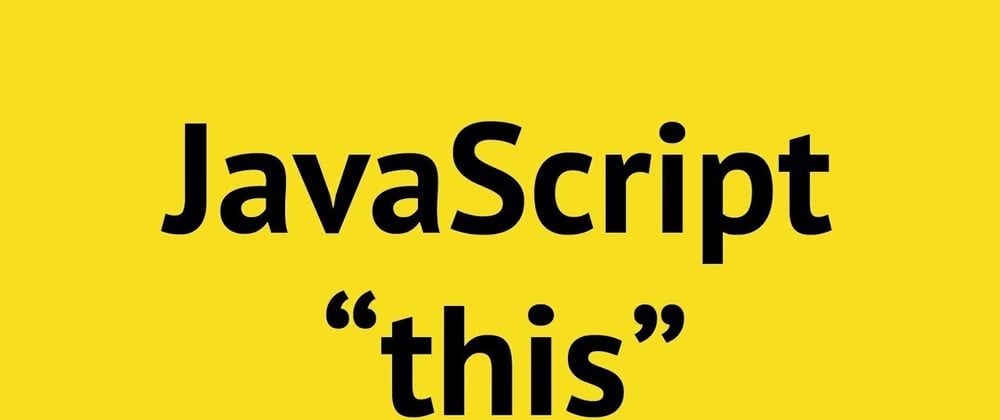What is this keyword in javascript?
"this" keyword in JavaScript allows a function to be re-used in various execution contexts. That is, once a function is defined, it can be invoked for different objects using the "this" keyword. The current execution contact identifies an object when we invoke a method.
If you want to understand this keyword, you have to know some binding rules. We will discuss these step by step.
Implicit Binding
In the case of common JavaScript functions, if the function is preceded by a (.) Dot notation, then the object before the dot notation is the "this" or object inside the function. If the property of the object is not found then JavaScript takes the window as the object by default.
let blog = {
name: 'Tapas',
address: 'freecodecamp',
message: function() {
console.log(`${this.name} blogs on ${this.address}`);
}
};
blog.message();
Explicit Binding:
If the function is not within an object, but if the function is in a global context, then when calling the function, it is necessary to specify which object will be "this" directly. This requires some built-in methods of JavaScript. The methods are:
let getName = function() {
console.log(this.name);
}
let user = {
name: 'Tapas',
address: 'Freecodecamp'
};
getName.call(user);
.call() method:
If the function is in the global context, then when invoked the function you have to specify which object will be "this" directly. This requires using JavaScript's built-in method .call(). .call() method takes an object as the first parameter of the method and many more parameters can be given later.
.apply() method:
In the same case, JavaScript's built-in method .apply() can be used. It works like the .call () method. However, the .apply() method takes an object as its first parameter and an array as its second parameter.
let getName = function(hobby1, hobby2) {
console.log(this.name + ' likes ' + hobby1 + ' , ' + hobby2);
}
let user = {
name: 'Tapas',
address: 'Bangalore'
};
let hobbies = ['Swimming', 'Blogging'];
getName.apply(user, hobbies);
.bind() method:
The .bind() method works just like the .call() method. However, the difference is that the .bind() method returns the instance of the function without directly calling the function and we can store it in a variable and call this variable as a function.
let getName = function(hobby1, hobby2) {
console.log(this.name + ' likes ' + hobby1 + ' , ' + hobby2);
}
let user = {
name: 'Tapas',
address: 'Bangalore'
};
let hobbies = ['Swimming', 'Blogging'];
let newFn = getName.bind(user, hobbies[0], hobbies[1]);
newFn();
Window Binding:
If "this" is an object within a function, unless it is defined directly or indirectly, JavaScript takes window as the object by default. This is basically window binding.
Conclusion
From this tutorial, we have learned "this" keyword in javascript and .call(), .apply(), .bind() methods.
Reference
Thanks for reading
Reach out to me on:







Top comments (7)
Thank you for this article Nasirul 👌
Fun thing that this just popped up in my article list. Because I would like to add the information that with Arrow Functions (related post) all of the above mentioned is not working. This is important to note because it also doesn't throw an error. So calling e.g.
bind(someContext)on an arrow function e.g.const func = () => console.log(this); func.bind({ foobar: 'foo'})()will not log the foobar object.This is an important addendum in the world of arrow-functions being used very often because not knowing it leads to severe bugs in applications that only show up later.
Even worse: If there is a transpiler in between and the arrow function gets converted to a real function then it "seems like" it is also working for arrow functions.
So the following could happen: Say you are developing an enterprise application and you are using
bind. Also you are supporting IE11 for some reason so you use transpilation of arrow functions. Now you deploy all of this and everything works fine because the former arrow function is an actual function.Some time later the corporation says: We switched to Chrome, you can switch of IE11 support. So you do. You turn off compilation and the whole application might break because the context binding suddenly is broken.
Long story short: Be aware of the fact that the mentioned functions shouldn't be used in combination with arrow functions and it's fine.
I'm sorry that I forgot to notice such a thing. But at the beginning, I said that it only applies to common functions. That means it won't work to the arrow function. You can see if you notice a little.
Sure Thing. I wasn't downtalking the article, just provided additional info 🤗
thanks for information
Hey. I do agree. I also wouldn't recommend the above functions anymore (see my other comment with post reference here).
However I think this article from @nasirulislam is extremely helpful from the perspective of "Understanding JavaScript" as a wholesome piece. The one that knows more also is able to make better decisions. If one doesn't know
bindetc. one cannot discuss about it hence also not neglect it for good reasons. So I find it very important that JS developers do know even things that they might decline for good reasons. But you cannot decline something you do not know. And this is also what makes up a good developer: Being able to explain why something shouldn't be used instead of just saying "don't because there is also alternatives".You right! I try to coding without this, function and binds of course (it is works!). And that way is much more easier. Because don't need worried about this is where to point. Functional programming so much cleaner than OOP in JS.
thanks for inform